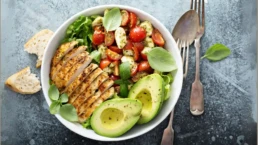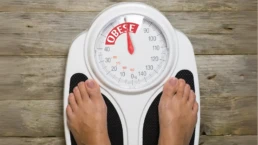Medically reviewed by Dr Chandril Chugh,
Renowned Neurologist and American Trained Specialist
Welcome to our ultimate guide about foods with lots of fiber for a healthy and balanced diet. At DrGood Deed, we think it’s super important to eat foods that are rich in fiber every day. In this article, we’ll talk about why fiber is so good for you, share a bunch of tasty fiber-packed foods, and give you tips on how to eat more fiber.
Table of Contents
ToggleWhy is it important to eat foods with lots of fiber? Well, these foods do amazing things for your body. They help your tummy feel good, keep your weight in check, lower cholesterol, and control sugar levels in your blood. When you eat these foods regularly, your digestion gets better, you feel full longer, and you become an overall healthier person.
To make it easy for you to get started on your fiber journey, we’ve made a list of 22 foods that are full of fiber and easy to find. These foods, like fruits, veggies, whole grains, legumes, and nuts, are not only good for you but also taste great. They give your body important nutrients and make you feel awesome.
As you keep reading, you’ll also learn about how fiber connects with your gut health. A diet with lots of fiber helps your gut work well, and we’ll talk about prebiotics and probiotics, two things that make your gut happy.
If eating more fiber sounds a bit tricky, don’t worry! We’re here to help. Our article has practical tips on making healthy choices when it comes to fiber-rich foods. We’ll guide you on how to include these foods in your meals, snacks, and even when you’re eating out.
Towards the end, we’ll explore how fiber is a great helper in managing weight. Foods with lots of fiber can keep you feeling full, reduce cravings, and support your goals for losing or maintaining weight. We’ll also introduce you to different types of fiber that are extra good for managing weight.
By the end of this guide, you’ll know all about fiber and be excited to make it a part of your daily meals. Let’s start this fiber-filled journey today and enjoy the fantastic benefits of these high-fiber foods!
Why Fiber Matters: Understanding Dietary Fiber Benefits
Before we dive into the world of high-fiber foods, let’s talk about why fiber is so important for our bodies. Dietary fiber, mainly found in plant-based foods, does many good things for us.
- Improved Digestion: Fiber helps our tummy work well by making sure we have regular trips to the bathroom and preventing constipation. It adds bulk to our poop, making it easier to pass through our intestines.
- Weight Management: Eating foods with fiber helps us manage our weight. Fiber makes us feel full, so we’re less likely to eat too much, helping us control our weight.
- Cholesterol Reduction: Some types of fiber, like the ones in oats, legumes, and fruits, can lower the bad cholesterol in our blood. Fiber grabs onto cholesterol and stops it from being absorbed, reducing the risk of heart disease.
- Blood Sugar Control: For those with diabetes or at risk of it, a diet high in fiber can help control blood sugar levels. Fiber slows down the absorption of sugars, preventing quick spikes in blood glucose.
To truly understand how fiber helps our health, it’s essential to know how much we should eat daily. The Institute of Medicine recommends 25 grams for women and 38 grams for men every day. But remember, individual needs can be different based on age, gender, and activity level.
| Food | Fiber Content (per 100g) |
|---|---|
| Split Peas | 8.3g |
| Lentils | 7.9g |
| Chia Seeds | 34.4g |
| Pear | 3.1g |
| Broccoli | 2.6g |
| Quinoa | 2.8g |
| Black Beans | 7.5g |
| Raspberries | 6.5g |
| Oats | 10.6g |
| Cauliflower | 2g |
Now, these foods have different amounts of fiber, so you can pick the ones you like best and that fit your taste buds.
Now that we know how great fiber is, let’s explore the world of high-fiber foods and see all the options available to us.
Elevating Your Fiber Intake: Simple Strategies
Eating more fiber doesn’t have to be tricky. Here are some easy tips to help you eat more foods with lots of fiber:
Add fruits and veggies to every meal: Start by putting fruits or veggies in each meal. They’re not just full of fiber but also give you essential vitamins and minerals.
Choose whole grains: Go for whole grain bread, pasta, and rice instead of the white versions. Whole grains keep their fiber and give you more nutrients.
Include legumes in your diet: Legumes like lentils and beans have a bunch of fiber. Add them to stews, salads, or soups for a fiber boost.
Snack on nuts and seeds: Almonds, chia seeds, and flaxseeds are tasty snacks with lots of fiber. Sprinkle them on yogurt or enjoy them as a snack.
With these simple changes, you can slowly increase your fiber intake and enjoy the benefits of a diet rich in fiber.
Fiber-Rich Foods: Enhancing Nutrition with Fiber-Packed Choices

Now, let’s explore a bunch of tasty foods that are full of fiber. Including these in your meals won’t just make your digestion better but will also give you lots of essential nutrients. Let’s dive into the world of fiber-rich foods and discover the yummy options available:
1. Fruits
Fruits are not just delicious but also have lots of dietary fiber. Add a variety of fiber-rich fruits like berries, apples, pears, and oranges to your daily meals. Snack on them or put them in smoothies, salads, or desserts for an extra fiber boost.
2. Vegetables
Vegetables are like superfoods for fiber and essential vitamins. Include lots of leafy greens such as spinach and kale, along with broccoli, carrots, and Brussels sprouts, in your meals. Roast, steam, or add them to stir-fries to keep the fiber and make them tasty.
3. Whole Grains
Whole grains are awesome for fiber and an essential part of a high-fiber diet. Choose whole grain options like brown rice, quinoa, oats, and whole wheat bread instead of the refined versions. These grains give you a good amount of fiber along with other helpful nutrients.
4. Legumes
Legumes, including beans, lentils, and chickpeas, are not only full of fiber but also have lots of protein. Mix them into soups, salads, or stews to get more fiber in your meals. You can also make tasty homemade hummus or bean-based dips for healthy snacks.
5. Nuts and Seeds
Nuts and seeds are not just tasty but also packed with fiber. Almonds, chia seeds, flaxseeds, and walnuts are excellent choices. Snack on them, sprinkle them over salads or yogurt, or use them as toppings for your favorite dishes.
By including these fiber-packed foods in your meals, you’ll boost your nutrition and support overall well-being. Try different recipes with these ingredients to add variety and excitement to your diet.
Fiber and Gut Health: The Connection Explained
Our gut health is super important for overall wellness. One thing that makes a big difference to our gut is the fiber we eat. When we include fiber in our diet, it helps our gut work well, prevents constipation, and lowers the risk of certain diseases.
So, how does fiber connect with gut health? Let’s find out:
The Role of Fiber in a Healthy Gut
Fiber acts like fuel for the good bacteria in our gut, also known as probiotics. These probiotics love certain types of fiber called prebiotics, which are found in many high-fiber foods. When we eat these fiber-rich foods, we give our friendly bacteria the nourishment they need to grow and be healthy in our gut.
As the probiotics break down the fiber, they make short-chain fatty acids (SCFAs) like butyrate, acetate, and propionate. These SCFAs do important things, like feeding the cells lining our intestine, reducing inflammation, and helping us have regular bathroom trips.
The Benefits of a Healthy Gut
By nurturing a diverse and flourishing gut microbiome through high-fiber meals, we can reap various benefits for our overall health, including:
- Improved digestion and nutrient absorption
- Prevention of constipation and promotion of regular bowel movements
- Reduced risk of gastrointestinal disorders, such as diverticulitis and hemorrhoids
- Enhanced immune system function
- Reduced inflammation in the body
- Lowered risk of chronic diseases, including heart disease, type 2 diabetes, and certain types of cancer
As you can see, maintaining a healthy gut is vital for our overall well-being, and high-fiber meals play a key role in achieving that balance.
Examples of High-Fiber Foods for a Healthy Gut
To help you incorporate more fiber into your diet, here is a table highlighting some fiber-rich foods that can support gut health:
| Fiber-Rich Foods | Fiber Content per 100g |
|---|---|
| Chia Seeds | 34.4g |
| Almonds | 12.5g |
| Black Beans | 16.6g |
| Broccoli | 2.6g |
| Raspberries | 6.5g |
| Whole Wheat Pasta | 6.3g |
Include these fiber-packed foods in your meals and experience the benefits yourself.
Remember, when increasing your fiber intake, do it gradually and drink enough water to avoid any tummy troubles.
Tips for Increasing Fiber Intake: Making Healthy Choices

Building a high-fiber diet requires practical tips and strategies. By adding more fiber-rich foods to your meals and snacks while keeping things balanced and varied, you can easily increase your fiber intake. Whether you’re eating out or shopping at the store, here are some tips to help you make healthy choices:
1. Choose Whole Grains
Whole grains are fantastic sources of dietary fiber. Go for whole grain products like brown rice, whole wheat bread, quinoa, and oats to up your fiber game. Check labels to make sure you’re getting 100% whole grains.
2. Load Up on Fruits and Vegetables
Fruits and vegetables not only have vitamins and minerals but are also packed with fiber. Include a mix of colorful fruits and veggies in your meals and snacks. Apples, berries, oranges, broccoli, carrots, and leafy greens are great choices to get more fiber daily.
3. Enjoy Legume-Based Dishes
Legumes, such as beans, lentils, and chickpeas, are not just fiber-rich but also have lots of protein. Add legumes to your meals by throwing them into soups, stews, or salads. You can also make tasty homemade hummus or dips for healthy snacking.
4. Don’t Forget About Nuts and Seeds
Nuts and seeds are not just delicious but also carry a good amount of dietary fiber. Include almonds, walnuts, chia seeds, and flaxseeds in your diet. Enjoy them as snacks or sprinkle them over salads, yogurt, or smoothies.
5. Stay Hydrated
Drinking enough water throughout the day helps your digestive system work well. It’s crucial to stay hydrated, especially when you’re increasing your fiber intake, to avoid constipation.
6. Plan and Prepare Meals in Advance
Planning and preparing your meals in advance can help you make healthier choices. With fiber-rich ingredients ready to go, you can easily add them to your meals and snacks for a high-fiber diet.
| Fiber-Rich Foods | Fiber Content per Serving (grams) |
|---|---|
| Chia Seeds (1 ounce) | 10.6 |
| Black Beans (1 cup, cooked) | 15 |
| Raspberries (1 cup) | 8 |
| Whole Wheat Pasta (1 cup, cooked) | 6 |
| Quinoa (1 cup, cooked) | 5 |
By following these tips and including more high-fiber foods in your diet, you can create a fiber-rich eating plan that supports good health. Remember, consulting with a healthcare professional or registered dietitian for personalized advice is always a good idea based on your specific needs.
Fiber and Weight Management: A Powerful Combination
When it comes to weight management, incorporating high-fiber meals into your diet can be a game-changer. Not only do fiber-packed foods offer a multitude of health benefits, but they also play a significant role in supporting healthy weight loss or maintenance.
One of the key reasons why high-fiber meals are effective for weight management is that they help you feel fuller for longer. Fiber has the unique ability to absorb water and expand in your stomach, creating a sense of satiety that can curb overeating and unnecessary snacking.
In addition to keeping hunger at bay, fiber can also reduce cravings, particularly for unhealthy, calorie-dense foods. By including fiber-rich choices in your meals, you’re providing your body with the nutrients it needs while minimizing the desire for sugary treats and high-fat snacks.
Furthermore, high-fiber diets are often associated with better weight loss outcomes. The specific types of fiber found in certain foods, such as soluble fiber, can slow down the digestion process, leading to a slower and steadier release of glucose into the bloodstream. This helps regulate blood sugar levels and prevents sharp spikes and crashes, which can contribute to weight gain and difficulty in maintaining a healthy weight.
The Benefits of High-Fiber Meals for Weight Management
Here are some key benefits of including high-fiber meals in your weight management journey:
- Feel fuller for longer, reducing the urge to overeat.
- Decrease cravings for unhealthy foods, promoting healthier choices.
- Stabilize blood sugar levels to support weight loss or maintenance.
- Improve digestion and prevent constipation, ensuring optimal gut health.
To ensure that you’re incorporating fiber-rich foods into your meals, consider these examples:
| Fiber-Packed Foods | Fiber Content (per serving) |
|---|---|
| Avocado | 9 grams |
| Chia Seeds | 10 grams |
| Quinoa | 5 grams |
| Black Beans | 15 grams |
| Broccoli | 5 grams |
By incorporating these fiber-packed foods and others like them into your daily meals, you’ll be well on your way to achieving your weight management goals. Remember, consistency and balance are key to success.
With the powerful combination of high-fiber meals and your commitment to a healthy lifestyle, you can achieve your desired weight and maintain it in the long run. Start embracing fiber-packed foods today!
Conclusion
In summary, adding high-fiber foods to your balanced diet brings loads of benefits for your overall health. Fiber is a key part of a healthy diet, supporting proper digestion, weight management, cholesterol reduction, and blood sugar control.
By getting into the 22 fiber-rich foods we talked about, like broccoli, lentils, and chia seeds, you can make your nutrition better and enhance your overall quality of life. These fiber-packed choices give you essential nutrients while keeping you full and satisfied.
To start your journey into the world of fiber, make conscious choices to eat more fiber. Add more fruits, veggies, whole grains, legumes, and nuts to your meals and snacks. Aim for around 25-30 grams of fiber per day, gradually increasing your intake to avoid any tummy issues.
Remember, a diet high in fiber isn’t just great for your gut but also helps with weight management and overall wellness. By making healthy choices and embracing a fiber-filled lifestyle, you’ll give your body the nutrients it needs to thrive. Start your fiber journey today and feel the amazing power of high-fiber foods!
FAQ
Why is fiber important for a balanced diet?
Fiber is crucial for maintaining a healthy digestive system and supporting overall wellness. It helps regulate bowel movements, lowers the risk of heart disease, and aids in weight management. Consuming enough fiber promotes a feeling of fullness, assists in blood sugar control, and contributes to a balanced diet.
How much fiber should I consume daily?
The recommended daily fiber intake varies based on age and gender. Typically, adult men should aim for 38 grams, while adult women should aim for 25 grams. However, individual needs may differ, so it’s advisable to consult with a healthcare professional or registered dietitian for personalized guidance.
What are some healthy sources of fiber?
Including a variety of high-fiber foods in your diet is important. Some healthy sources of fiber include fruits such as apples and berries, vegetables like broccoli and Brussels sprouts, whole grains such as oats and quinoa, legumes like lentils and chickpeas, and nuts and seeds such as almonds and chia seeds.
How can I increase my fiber intake?
Gradually increasing your fiber intake can be achieved through simple dietary modifications. Choose whole grain products over refined grains, add more fruits and vegetables to your meals, snack on fiber-rich nuts and seeds, and incorporate legume-based dishes. Ensuring a gradual increase in fiber intake and staying hydrated can help prevent digestive discomfort.
Can fiber help with weight management?
Yes, fiber can be beneficial for weight management. High-fiber foods are often low in calories and contribute to a feeling of fullness, reducing the likelihood of overeating. Additionally, fiber-rich foods require more chewing, promoting mindful eating. Certain types of fiber, like soluble fiber, can help regulate blood sugar levels, supporting healthy weight management.
Are there any potential side effects of consuming too much fiber?
Consuming excessive fiber without a gradual increase can lead to digestive discomfort, including bloating, gas, and abdominal cramps. It’s important to increase fiber intake slowly and stay hydrated to support digestion. If persistent digestive issues occur, consulting with a healthcare professional is advisable.

This article is medically reviewed by Dr. Chandril Chugh, Board-Certified Neurologist, providing expert insights and reliable health information.
Dr. Chandril Chugh is a U.S.-trained neurologist with over a decade of experience. Known for his compassionate care, he specializes in treating neurological conditions such as migraines, epilepsy, and Parkinson’s disease. Dr. Chugh is highly regarded for his patient-centered approach and dedication to providing personalized care.








